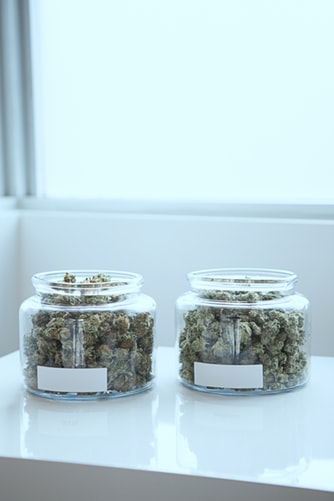U.S, March 17, 2020 (ANALYTICALCANNABIS) Microbiological contaminants, such as Salmonella, shiga toxin-producing E. coli, and Aspergillus, can often go unidentified or misidentified in cannabis samples if vetted testing methods aren’t used. And as many medical cannabis users live with compromised immune systems, any microorganism that goes undetected could prove fatal. Fortunately, new developments in cannabis micro-testing could help some analysts discover these bothersome bugs before they become so hazardous. How-can-PCR-kits-help-detect-microbes-on-cannabis-samples
To find out more, Analytical Cannabis spoke to Amrita Puri,field marketing specialist at Bio-Rad, a clinical diagnostics manufacturing company in California.
State by state variation in testing requirements and regulations is a big challenge in cannabis testing. Can you tell us a little bit about the different ways microbiological testing varies and how this differs to what you see in other industries?
The regulations and requirements for microbial contaminants are all over the map, quite literally. In the US, testing for Aspergillus as well as other pathogens such as Salmonella and Shiga toxin-producing E. coli is required for some of the states (California, Nevada, and Alaska). On the other hand, the state of New York requires an array of tests for Pseudomonas, Enterococcus, bile-tolerant gram-negative bacteria, Clostridium, Mucor, Penicillium, and thermophilic actinomycetes species.
Unlike the cannabis industry, the food industry is where we see a framework of standardized test methods for a variety of microbial contaminants. As the responsibility for the regulation of food safety falls under the United States Department of Agriculture’s Food Safety and Inspection Service (USDA-FSIS) and the Food and Drug Administration (FDA), target pathogens and their action limits are clearly defined for every food category. The mandatory use of regulatory approved methods enables growers, manufacturers, and processors to put a product on the market shelf that is guaranteed safe for human consumption.
Do you believe that any of the testing requirements currently being employed in legal markets go far enough when it comes to microbiological contamination?
In my opinion, the cannabis industry would benefit tremendously from adopting an environmental monitoring program. At the moment, this is not required by state regulations. The cannabis flower, leaves, roots, equipment as well as surfaces are all prone to microbial contamination. A comprehensive environmental monitoring program significantly reduces the risk of product recalls. We don’t have to wait for a massive recall or an outbreak to mandate these proven testing practices. Because cannabis is used in so many different forms, it is important for producers to conduct a risk assessment of their manufacturing processes and integrate the appropriate microbial tests that would ensure consumer safety.
Why can certain microbiological contaminants be missed during testing?
Due to the nature of the cannabis matrix, microbial contaminants may be prevalent at very low levels. A very basic concept of microbiological testing is enrichment. The process of enrichment allows injured bacterial or fungal cells to resuscitate in a rich nutrient medium incubated at an optimal temperature and multiply to levels detectable by molecular methods. Detection methods that do not employ enrichment-based techniques are very likely to result in false negative results. Additionally, microorganisms such as Aspergillusare naturally slow growers, requiring a minimum of 48 hours of enrichment time. This has also been outlined in the standard method performance requirements for Aspergillus detection in cannabis by AOAC’s Cannabis Analytical Science Program in 2019. Methods suggesting an enrichment time of 24 hours could produce incorrect data. Bio-Rad’s iQ-Check real-time PCR kits require samples to be enriched prior to detection to ensure proper recovery of stressed cells and to ultimately generate accurate results.
How can labs find out what they are missing in routine testing? Is there any one method, or set of methods, that can solve all of the issues you’ve pointed out?
It is always a good practice for labs to do their due diligence prior to choosing a method that is suitable for their operation. The onus is on the testing labs to check for regulatory approvals and validation reports. During the method review, labs must ensure the method is fit for purpose. Some of the important features to look for in a properly validated test kit is to make sure the method has used a diverse range of microbial targets, has used unique strains to evaluate several matrices, has not used surrogate microorganisms, has used live cells to evaluate methods performance, has used varying inoculum levels and replicates and finally used a cultural methods to confirm presumptive results. State regulations require labs to perform their own in-house verification of the methods they plan to adopt. This is an opportunity for the labs to discuss the validation study design with the method manufacturer to avoid any potential issues during the routine laboratory screening of cannabis and cannabis infused products.
Are Bio-Rad testing methods validated in a different way to the other popular methods used in the cannabis industry?
Bio-Rad’s iQ-Check Real-Time PCR kits have been validated by several international certification bodies such as AOAC, AFNOR, NordVal, and Health Canada. These validation studies were conducted at independent laboratories to compare performance of methods to defined reference methods, such as the USDA-FSIS, the FDA, the International Organization for Standardization, or Health Canada’s compendium of analytical methods. Our kits have been put through stringent conditions to mimic real world matrix environments to generate accurate data with confidence. Bio-Rad has decades of experience in molecular diagnostics, and our platform is used globally by renowned food manufacturers and service labs to ensure a safe food supply.







